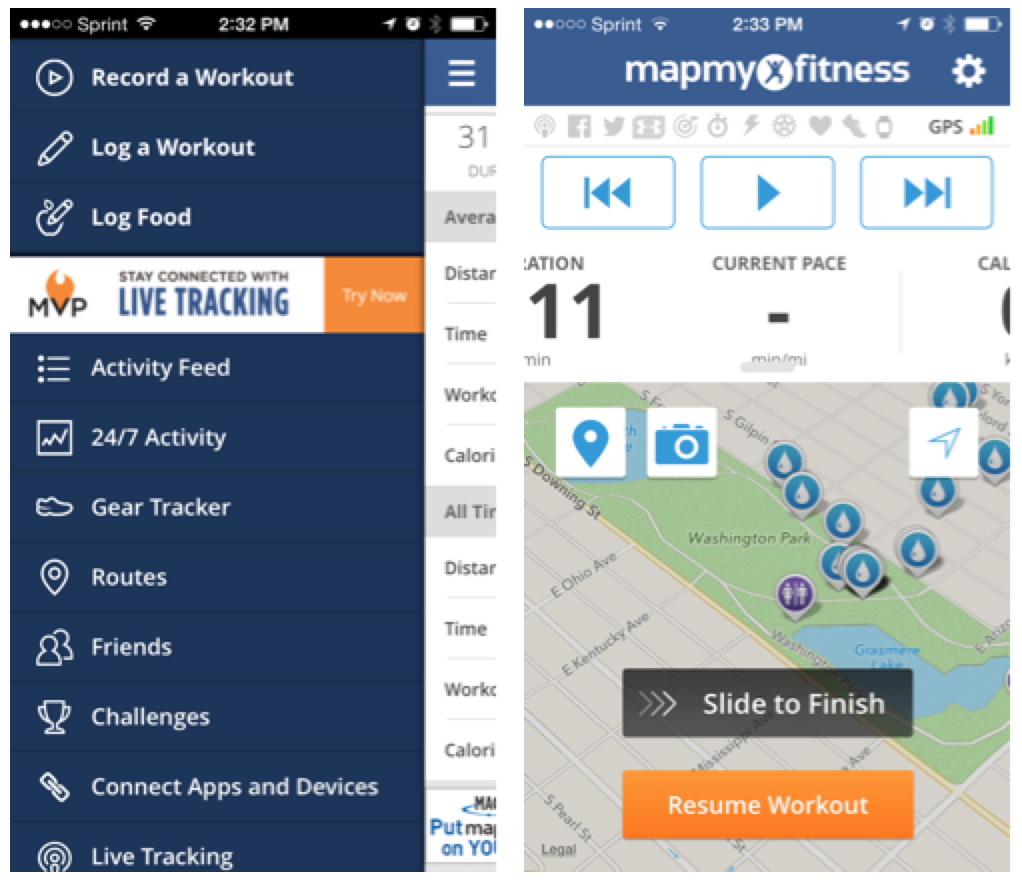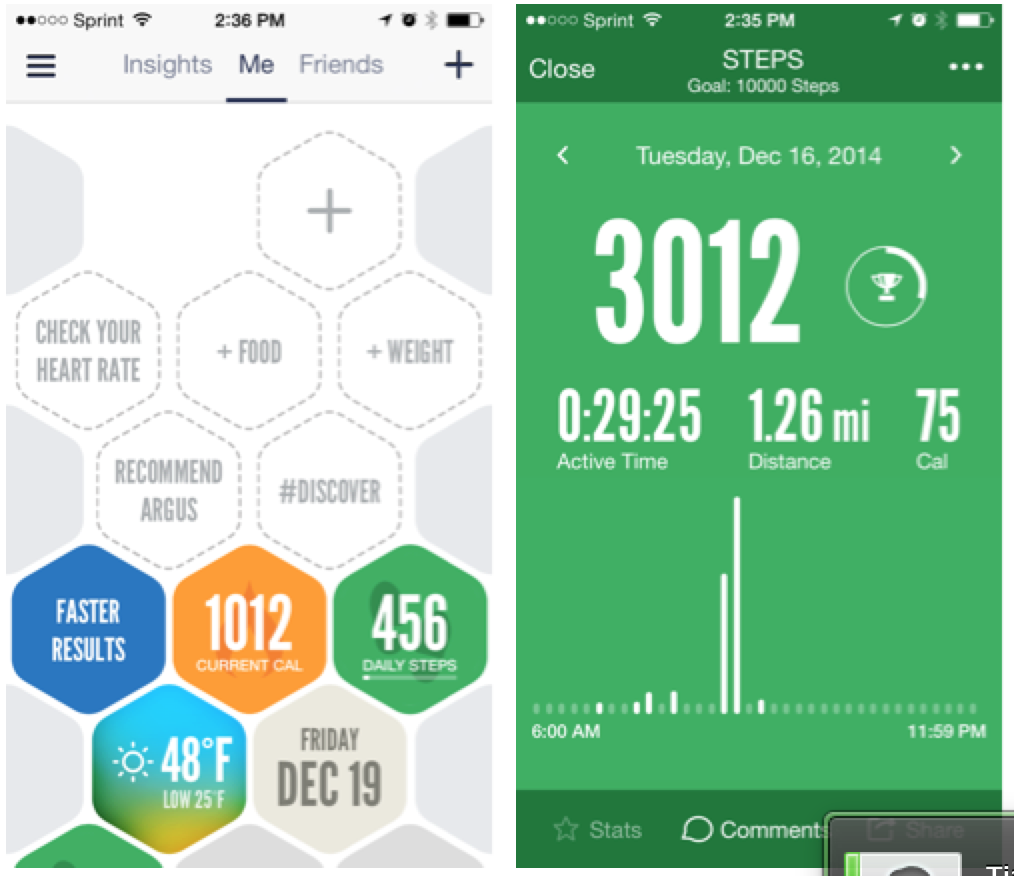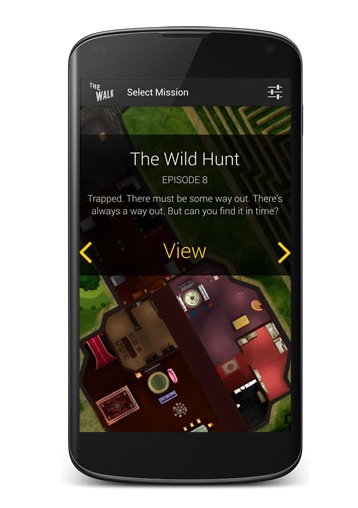The Best Fitness Apps

If you're looking to get (or stay) in shape with the help of a smartphone, you have options. Lots of them: There are apps that will track your exercise, apps that will record your food intake, and even apps that will remind you to drink water.
If you're looking for one, all-inclusive app that will take on all your fitness-related tasks, our pick is MapMyFitness. There is a free version of the app, and also a $5.99-per-month version and a $29.99-per-year subscription that will buy you perks like audio coaching and customizable splits. But for the typical exerciser, MapMyFitness' basic package should cover your bases.
The app is fundamentally a workout tracker, allowing users to either manually log the time they spend exercising and what they do (choices range from firefighting to yoga to mowing the lawn), or to use the phone's built-in GPS to record distance and time during a run, walk or bike ride. One feature that elevates MapMyFitness above other workout trackers is its "Routes" option — simply click "My Routes" to see maps of your usual walks and jogs, or try "Nearby" for popular exercise routes near you. The Nearby option is a great, easy way to get yourself out of a running rut.

MapMyFitness also has a diet-tracking tool. You enter the food you eat, pick a serving size, and the app will keep a running tally of your calories throughout the day. The diet tracker could be improved by allowing users to enter calories manually, based on nutrition labels, rather than only using generic servings, but there are multiple options for different units and serving sizes, allowing for close approximations. There are also options for logging body weight, hours slept and water consumed. For those of us who tend to wear our running shoes long past the point when they should be retired, MapMyFitness even has a gear-tracker option that lets you make a note when you buy a particular brand of shoe, and reminds you when you've hit the end of that shoe's life span.
MapMyFitness can be linked with the motion chip in the iPhone (from version 5s and on), turning it into a pedometer. Alternatively, the app can sync with external devices such as Fitbits or heart rate monitors for more accurate motion-tracking.
The app's interface is not fancy — it looks similar to the Facebook news feed — but is easy to navigate. Speaking of Facebook, MapMyFitness has a social component, as well. The app has its own activity feed, allowing you to share your workouts with friends who also use the app. You can also connect the feed so that it sends out updates on Facebook or Twitter. Fitness companies (including MapMyFitness' now-owner Under Armour) load free Challenges into the app, and offer chances to win prizes if you log a certain number of workouts. [Best Fitness Trackers]
Runner-up
Sign up for the Live Science daily newsletter now
Get the world’s most fascinating discoveries delivered straight to your inbox.
A close second to MapMyFitness is Argus, a free app that actually makes a better pedometer than our No. 1 pick. Argus doesn't have quite as many functions as MapMyFitness, but it is simple to use and could be a better pick for exercisers looking for something streamlined and sleek to keep them moving.
Argus stands out for its colorful, honeycomb interface, which allows you to tap an icon to quickly record a glass of water downed, a daily weigh-in or a nap. Steps taken per day are automatically recorded by the iPhone's motion chip, and appear on the honeycomb. A comprehensive activity list lets you record a number of workout options, as well as intake of alcohol and caffeinated beverages, and even your body temperature and blood pressure. Like MapMyFitness, Argus can log a workout using GPS, and though this app won't provide you with splits, you'll get an easy-to-read chart with information on approximate calories burned, elevation gain, steps taken, best and average pace and average cadence (steps per minute).
Argus allows users to keep a food diary by snapping photos of meals, which appear, Instagram-like, in the app's honeycomb display. The app allows you to pick the food groups you've eaten from in that meal, but doesn't include a calorie counter, which is a drawback. If you enable push notifications, Argus tells you when it's been 2 hours since you last told it you had a drink of water. It's a feature that could be useful for those who forget they're thirsty, but is more frequently irritating. The app does offer a social networking component and connects to external fitness trackers and monitors.

Overall, Argus isn't as good as MapMyFitness for the stats-obsessed, but it would be a great choice for the beginning exerciser or someone who just likes to have a simple record of their movement.
Also good
Let's face it: Fitness apps are personal, and many of them have similar capacities. Finding the one that motivates you might be a matter of trial and error. If that's the case, here are a few other options that have their own strengths.
Runkeeper(free) is an easy-to-use workout log app. Like MapMyFitness, Runkeeper can use GPS to record a run, walk or bike ride, but also lets you enter an activity manually. The app has a simple social component and can connect to Facebook and Twitter. There is no diet tracking, but you can keep track of changes in your weight. A very limited number of personal-training plans are free with the app, but most will cost $9.99 per month, or $39.99 for a year's subscription. A feature that beginners or those looking for guidance might appreciate is the app's "Goals" option, which lets you set objectives for yourself and gives suggestions on achieving them.
Lose it! (free) is primarily a weight-focused app that tallies your calories in and calories out every day, with an exercise log and food diary. The app allows users to set weight goals and track progress with a simple graph. You won't get a lot of in-depth exercise stats with Lose It!, but the diet-tracker covers not only calories, but also nutrients such as protein, carbs and fat. The app offers a lot of options for tracking calories – you can scan a prepackaged food's barcode, search by common food brands in order to input nutrition information, or input nutrient and calorie information manually.
Runtastic (free) is a popular app with an attractive interface. The free version allows you to see your activity statistics by month; for $2.99, you can upgrade to Runtastic Pro and get weekly and yearly statistics as well as heart-rate monitoring, suggested routes and interval workouts. Some of these features are free in other fitness apps. For those who find walking, running or biking a bit dull, Runtastic offers in-app purchases of inspirational running tracks, or you can import playlists into the app.
Strava (free) is a popular app in the cycling community that recently opened to runners. If competition is what gets you going, this is the app for you — Strava's innovation is that it allows users to compare themselves to other users on particular segments of a road or trail. One nice safety feature of Strava is the ability to set a privacy zone around typical starting points (such as your home), so other users can't guess where you live. A premium membership ($5.99 a month or $59 a year) allows the truly competition-focused to filter out leaderboard results by age and weight class, set up advanced statistics and measure "suffer scores" based on heart rate zones.
Endomondo(free) acts like an electronic coach, allowing users to set goals and giving feedback in real-time during a variety of exercises. The app keeps a history of your recorded and manually logged workouts, and offers user-made routes for runners, walkers and bikers. Like many fitness apps, Endomondo offers a social networking feature; however, this app assumes you want to share, and users have to manually exclude most of the data and features from sharing one-by-one. The app would be improved with a single privacy button to allow users to remove everything from sharing.
Offbeat apps

Most fitness apps motivate with statistics: split times, steps taken and calories consumed. If numbers aren't your bag, though, a few developers have come up with more creative options. The Walk ($4.99), commissioned by the United Kingdom's National Health Service and the Department of Health, is an interactive walking game that acts as a pedometer and motivator. Take more steps, and you'll gradually unlock more chapters of a story about a mysterious bomb and rogue agents. The Walk was developed by the creators of another popular story app, Zombies, Run! ($3.99), which turns a daily jog into a race against the undead. Between the two, even the most reluctant exercisers should find enough motivation to get moving.
Follow Stephanie Pappas on Twitter and Google+. Follow us @livescience, Facebook & Google+.

Stephanie Pappas is a contributing writer for Live Science, covering topics ranging from geoscience to archaeology to the human brain and behavior. She was previously a senior writer for Live Science but is now a freelancer based in Denver, Colorado, and regularly contributes to Scientific American and The Monitor, the monthly magazine of the American Psychological Association. Stephanie received a bachelor's degree in psychology from the University of South Carolina and a graduate certificate in science communication from the University of California, Santa Cruz.










